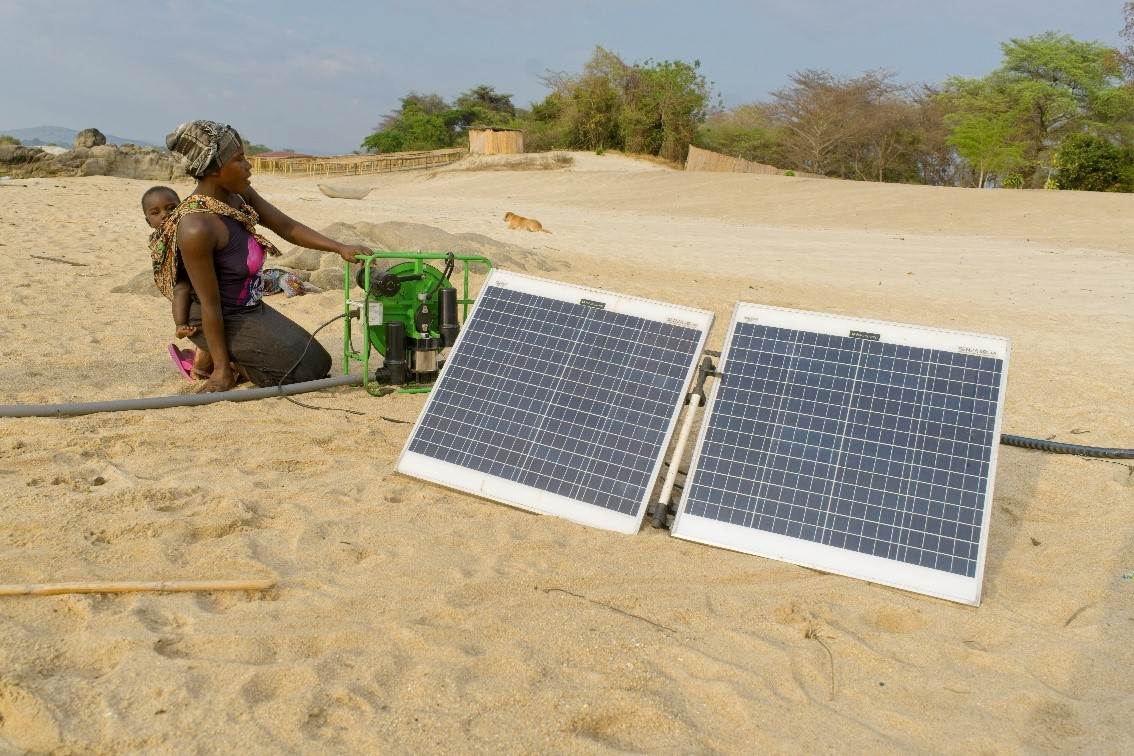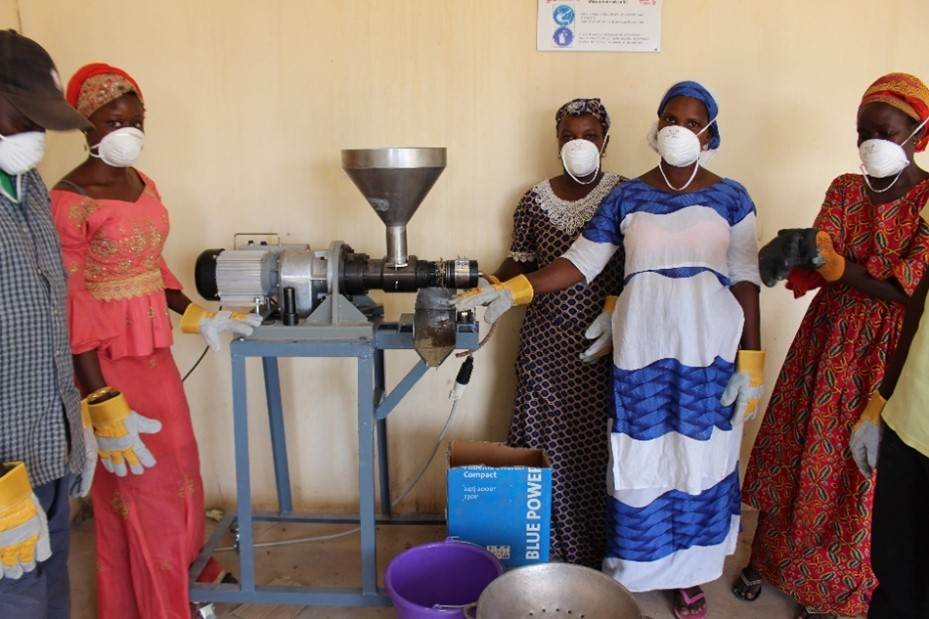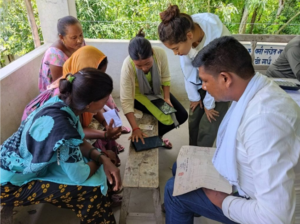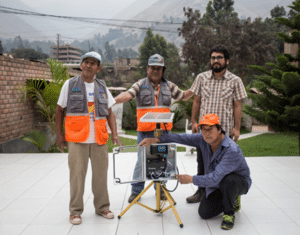Applying the 3 ‘A’ Resilience Framework to Energy Access
EnergyBlog

Figure 1: Solar power is used to pump water from Lake Malawi to nearby greenhouses
The twin challenges of sustainable development and climate change have increased interest in the role that energy access can play in enabling adaptation to climate change.
One challenge in advancing a joint agenda is articulating and assessing the contribution of different energy uses (household, productive and institutional) to resilience and adaptation (GOGLA, 2021). Currently, energy access stakeholders including NGOs and off-grid companies face challenges in identifying and assessing energy access contributions and convincing policy makers and funding organisations of their importance (ibid).
A range of frameworks exist for assessing the concept of resilience, each with different components (Bahadur and Pichon, 2016). One that is useful for evaluating energy access interventions is the 3 ‘A’ Resilience Framework, originally developed to assess projects funded through DFID’s ‘Building Resilience and Adaptation to Climate Extremes and Disasters’ (BRACED) programme (Bahadur et al, 2015).
The 3 ‘A’ framework conceptualises ‘resilience’ as ‘the ability to anticipate, avoid, plan for, cope with, recover from and adapt to (climate related) shocks and stresses’ (ibid,11). It splits the concept into three capacities -absorptive, anticipatory and adaptive- that are a function of different capitals (both tangible, such as physical assets, and intangible such as social relations). The framework has been used to diagnose the extent to which resilience capacities are present in social systems, such as rural villages, and to evaluate the success of resilience building interventions, from agricultural programmes to social protection (Bahadur et al, 2015; Ulrichs and Slater, 2016).
Conceptualising resilience in terms of capacities is useful because it allows interventions to be assessed before the occurrence of climatic shocks or stresses (which may not occur within the lifespan of the intervention). Therefore, it can be used to assess the extent to which energy services build resilience ex-ante based on prior evidence and experience of what capitals are needed to deal with similar climate hazards.
Below, I include a brief description of each capacity and, using a series of tables (one for each capacity), indicate the potential contribution different energy services can make to key elements, as well as example indicators. This article is not intended as an exhaustive list of all possible contributions, but to illustrate one way of framing the role of energy access in adaptation. I have drawn on the original 3 ‘A’ report (Bahadur et al, 2015) as well as other adaptation and disaster risk reduction resources (Practical Action, 2020; Pasteur, 2013).
Sections:
1. Energy access contributions to adaptive capacity

Figure 2: Building adaptive capacity: solar powered milling equipment used to convert grains into higher value flours
Adaptative capacity is the ability to take deliberate action in response to long-term, uncertain, or evolving climate hazards and to learn and adjust to similar hazards in future.
Adaptive capacity is often demonstrated through the ability to build and sustain incomes and other assets despite climate change and variability as well as the ability to make livelihood decisions, such as investing in new equipment or diversifying activities to spread risks and reduce sensitivity to climate hazards (Bahadur et al, 2015).
This capacity is typically apparent and strengthened during non-emergency periods and could include utilising a mix of historical and downscaled-climate projections to inform livelihood decisions (ibid).
| Capacity elements | Energy services | Example indicators |
|---|---|---|
| Risk knowledge
Collating, analysing, packaging, and distributing climate data (e.g., temperature, rainfall, and extreme events) from both seasonal predictions and long-term projections (e.g., downscaled General Circulation Model projections) |
Climate Information Services:
|
|
| Basic services
e.g., access to drinking water, education and healthcare services |
Electrification of community services:
Health facilities
Educational facilities
Lighting
|
|
| Strengthening and adapting livelihoods
e.g., adopting drought or flood tolerant crops, improving market linkages and value addition, improved resource management, and diversification of livelihoods (e.g., adopting agricultural and artisanal activities and urban wage labour) |
Productive uses:
|
|
2. Energy access contributions to absorptive capacity

Figure 3: Building absorptive capacity: farmers use mobile phones to access an
index-based flood insurance scheme
Absorptive capacity is the ability of social systems to absorb and cope with the impacts of climate-related disasters during and after they occur using available skills and resources
Absorptive capacity is often demonstrated through the ability to access and deploy tangible assets, such as savings, and intangible assets, such as social networks, to cope with immediate disaster impacts such as injury or loss of or damage to livelihoods and assets.
It can also influence levels of adaptive capacity as buffering immediate impacts and maintaining assets following sudden shocks, such as flash floods, is vital for adapting to longer-term changes such as risings average temperature (ibid).
| Capacity elements | Energy services | Example indicators |
|---|---|---|
| Financial resources
Buffering impacts e.g. through access to bank accounts, social transfers (cash or in-kind), savings and loans schemes, or insurance mechanisms |
ICTs:
|
|
| Support networks
Support from friends, family, or government and community-based organisations |
ICTs:
Lighting:
Within government and community buildings to improve coordination of disaster responses |
|
| Asset building and retention
Buffering impacts e.g., through higher incomes, crop yields and herd sizes
Asset diversification Buffering impacts by substituting one asset for another, enabled through diversity and redundancy |
Productive uses:
|
|
3. Energy access contributions to anticipatory capacity

Figure 4: Building anticipatory capacity: solar powered hazard monitoring equipment
Anticipatory capacity is the ability of social systems to anticipate and reduce the impacts of climate hazards through prior planning and preparation
Anticipatory capacity is demonstrated through proactive and targeted responses to known hazards before they happen to avoid or reduce negative impacts (in contrast to adaptive capacity which responds to longer-time and often uncertain hazards, such as changes in average rainfall and temperature conditions over several years).
For example, it is evident in the use of weather forecasts to observe the start of hurricanes and storms and to calculate their strength and tracks (ibid).
| Capacity elements | Energy services | Example indicators |
|---|---|---|
| Risk knowledge
Understanding hazard intensity and exposure and sensitivity to hazard impacts |
ICTs:
|
|
| Monitoring and warning
Collecting and monitoring environmental data e.g., weather and hydrological patterns that took place when past hazards occurred and statistically modelling future hazard likeliness |
ICTs:
|
|
| Dissemination and communication
Warning messages that are accessible, clear, understandable and trusted |
ICTs:
|
|
| Response capability
Plans, training, education and resources to help people prepare for disasters |
ICTs:
Lighting:
|
|
Discussion
The 3 ‘A’ Framework is useful in framing how energy uses can contribute to resilience. However, it is important to acknowledge some important caveats.
First, the presence of a given capacity does not guarantee that a climate hazard will be managed successfully; it only indicates the likelihood of success based on prior experiences (Bahadur and Pichon, 2016). Therefore, it is recommended that practitioners track the impact of capacities on development outcomes, such as poverty reduction and improved wellbeing, by retaining ex-poste development indicators as the ultimate sign of intervention success (ibid). This supports the argument that ‘resilience’, originally associated with maintaining the status quo, should not supplant ‘development’, associated with positive change, as the ultimate goal of development work (Béné et al, 2012). Instead, focus should be on making interventions and their outcomes more resilient to shocks and stresses to ensure that improvements in wellbeing and poverty reduction are achieved and sustained in the context of climate change.
Second, as likelihood of success is informed by past experiences and available evidence, there is a need for further research to investigate the extent to which improved energy access actually translates into greater resilience in specific climate and socio-economic contexts. This will help to improve overall understanding of the energy access – adaptation nexus and the design of specific interventions and Monitoring and Evaluation tools. For instance, while energy services may contribute to a given resilience capacity, this contribution alone may not be sufficient for a household or village to fully withstand climatic shocks or stresses and other interventions, such as livelihood support or improved resource management, may also be required.
At Practical Action, we address this challenge by integrating our energy access solutions with other approaches. For example, we have combined solar powered irrigation with agro-ecology in Zimbabwe and Integrated Water Resource Management in Sudan to sustainably address issues of water scarcity made worse by climate change. To support broader integration of energy access and adaptation within the off-grid sector, we also aim to collect further evidence of the extent to which a range of different energy access tiers and uses build resilience in specific contexts.
If you would like to know more about Practical Action’s research plans or to partner with us in the area of energy access for climate change adaptation, please contact Tom Stevenson or Mattia Vianello at Practical Action:
Tom Stevenson
Tom Stevenson is the Energy and Climate Analyst at Practical Action. He supports our energy change ambition and is also working to integrate energy access and climate change adaptation within our work and the wider sector through research, project development and external influencing.
Mattia Vianello
Mattia Vianello is Head of Energy at Practical Action. As thought leader on energy, Mattia works closely with our offices and international partners to scale up impact across productive uses of energy, humanitarian energy, last mile distribution, clean cooking and the cross-cutting area of energy access for climate change adaptation.
References
Bahadur A.V., Peters K., Wilkinson E., Pichon F., Gray K. and Tanner T., 2015. The 3as: Tracking resilience across braced, London: BRACED.
Bahadur A.V., and Pichon, F., 2016. Analysis of Resilience Measurement Frameworks and Approaches. London: Overseas Development Institute.
Béné, C., Godfrey Wood, R., Newsham A., and Davies M., 2012. Resilience: New Utopia or New Tyranny? Reflection about the Potentials and Limits of the Concept of Resilience in Relation to Vulnerability Reduction Programmes. Brighton: Institute of Development Studies.
Global Off-Grid Lighting Association (GOGLA), 2022. How the off-grid solar industry can boost impact and financing for climate adaptation and resilience. [Online]. Available at: https://www.gogla.org/about-us/blogs/how-the-off-grid-solar-industry-can-boost-impact-and-financing-for-climate-0 [Accessed 27.01.23].
Pasteur, K., 2011. From Vulnerability to Resilience: A framework for analysis and action to build community resilience. Rugby: Practical Action Publishing.
Practical Action, 2020. Transforming lives through ingenuity: Practical Action early warning systems. Rugby: Practical Action Publishing.
Ulrichs, M., & Slater, R., 2016. How can social protection build resilience? Kenya and Uganda: Insights from Ethiopia. London: BRACED.